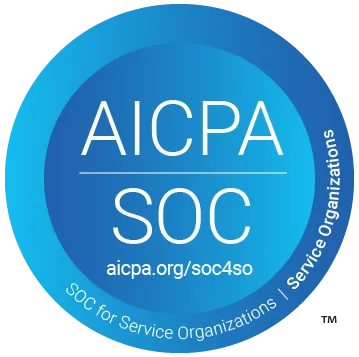Best practices for automated regression testing in web applications


TL;DR – When automating a manual regression test suite, consider the following best practices: define your strategy, choose your tool wisely, keep tests updated, align your team, and plan to scale.
We’ve all experienced the frustration – you introduce a new feature, and suddenly, things stop working as expected. This is where automated regression testing proves invaluable. It’s a transformative tool for web applications, helping us detect bugs early before they cause significant issues in production. As developers, we understand the importance of maintaining code stability while continuously enhancing functionality. Automated regression testing provides the assurance we need to innovate confidently without the risk of disrupting existing features.
In this article, we’ll explore the best practices for automated regression testing in web applications. We’ll discuss why it’s crucial for web projects and how to develop a scalable testing framework. We’ll also offer tips on maintaining your test suites and examine how AI and machine learning are changing software testing. Whether you’re new to test automation or aiming to enhance your CI/CD pipeline, we’ve got practical insights and examples for you.
Assessing the need for automated regression testing in web projects
Web applications are always evolving. With every update, bug fix, or new feature, there’s a risk of inadvertently breaking existing functionality. Automated regression testing helps mitigate this risk. It ensures that our web app continues to function as expected after any modifications. Think of it as a safety net that catches unforeseen issues before they affect our users. Manually rechecking everything with each change isn’t practical—it’s time-consuming and prone to errors. That’s why automating regression tests is a smart move.
Identifying regression-prone areas
To effectively implement automated regression testing, it’s essential to identify the parts of your web app most likely to encounter issues when changes are made. These typically include tightly coupled code or sections with complex dependencies. Additionally, focusing on critical user journeys and various flows within the application is crucial.
Here’s a checklist to help identify areas susceptible to regression:
- Frequently used features
- Core functionalities
- Sections with recent bug fixes
- Modules involving intricate integrations
- Components that rely on external systems or APIs
By targeting these areas, you can develop a more focused regression testing strategy.
Cost-benefit analysis of automation
Implementing automated regression testing requires an initial investment in tools, frameworks, and training. However, it can yield significant long-term savings and efficiency gains. The return on investment (ROI) from test automation becomes evident when considering the time saved by automated tests versus manual testing, particularly in large projects with complex integrations. Automated tests can be executed continuously, allowing for quicker detection and resolution of issues before they escalate into costly problems.
Join the QA Revolution
Sign up for the latest AI and QA technology updates!
Work Email*
I want to subscribe to*
- Product Updates
- News and Resources
Determining test coverage goals
Achieving the right balance between comprehensive testing and efficiency is key when setting test coverage goals. Aim to cover the most critical aspects of your web app without overextending to every line of code. Effective test coverage involves:
- Prioritizing key areas based on risk and importance
- Focusing on high-priority test cases first, such as those involving critical or frequently used features
- Leveraging automation to handle repetitive, time-consuming tests
- Continuously reassessing and adapting test coverage as the application evolves
The quality of tests is more important than quantity. The goal is to ensure tests are capable of identifying genuine issues that could affect users.
Building a scalable automated regression testing framework
Creating a scalable automated regression testing framework involves building a flexible and efficient system that evolves with your project. Consider these key factors:
Choosing a programming language and architecture
Selecting an appropriate programming language is crucial for your testing framework. Options vary, each offering distinct advantages. For instance, Python is favored for its simplicity and powerful testing libraries, making it suitable for various testing scenarios. Java is also a strong choice, particularly for cross-browser and parallel testing due to its multithreading capabilities. JavaScript is increasingly popular, especially with the shift towards earlier testing phases in development, and TypeScript offers robust type checking beneficial for large-scale applications.
Creating modular and reusable test components
To achieve scalability, focus on developing reusable test components. This approach enhances testing efficiency and saves time. Tips for creating reusable test components include:
- Breaking down test cases into smaller, independent modules that assess specific functions
- Documenting test cases with clear inputs, expected outcomes, and actions
- Utilizing parameters to adapt test cases to different conditions
- Consolidating common test steps into reusable components
- Developing utility functions for frequent actions such as data validation and error handling
These practices enable the creation of a versatile library of test components, facilitating easy adaptation and extension for specific test cases.
Implementing cross-browser and cross-device testing
In today’s digital environment, ensuring web applications function consistently across various browsers and devices is essential. Effective cross-browser and cross-device testing involves identifying the most critical combinations of devices, browsers, and viewport sizes relevant to your users. Cloud-based solutions provide access to a wide range of devices and browsers, simplifying the process and eliminating the need for extensive in-house device labs.
Best practices for maintaining automated regression test suites
Maintaining automated regression test suites can be challenging, but these best practices can simplify the process:
Version control for test scripts
Just as application code is versioned, test scripts should also be managed using version control systems like Git. This practice allows for tracking changes, understanding test coverage, and rolling back to previous versions when necessary. Aligning test version numbers with software versions simplifies tracking and ensures compatibility.
Regular review and refactoring
Keeping test suites efficient requires regular review and refactoring. Periodically assess your test cases to identify redundancies or outdated tests. Removing unnecessary tests and updating existing ones to reflect application changes ensures a leaner, more effective test suite.
Handling deprecated features and tests
As applications evolve, some features and their corresponding tests may become obsolete. Proactively manage these deprecated features by regularly evaluating your test suites to identify outdated test cases. Update or remove tests as necessary to maintain an efficient and relevant test suite.
Leveraging AI and machine learning in automated regression testing
AI and machine learning are transforming automated regression testing, introducing innovative approaches like self-healing test scripts and predictive test selection.
Self-healing test scripts
Self-healing test automation tools automatically adjust tests when application interfaces change, reducing the maintenance burden. These tools detect interface changes, analyze the modifications, update test scripts accordingly, validate the updates, and learn from the changes for future adjustments.
Predictive test selection
Predictive test selection uses machine learning to identify the most relevant tests to run for specific code changes. By analyzing project history, past code changes, test outcomes, and other metadata, this approach builds a model to predict which tests are likely to uncover issues, optimizing test execution and saving time.
Anomaly detection in test results
Anomaly detection employs AI to identify unusual patterns in test data, which can help pinpoint performance issues, security vulnerabilities, or unexpected user behaviors. These systems learn what is “normal” for an application, improving their accuracy in detecting genuine issues and minimizing false positives.
Conclusion
Automated regression testing significantly impacts how web applications are developed and maintained. By implementing best practices like creating modular test components, leveraging version control, and regularly refactoring test suites, you can establish robust frameworks that adapt to evolving projects. These practices help catch bugs early and provide the confidence to innovate without fear of breaking existing functionalities.
With the ongoing advancements in AI and machine learning, testing is becoming more efficient and less burdensome. Tools like self-healing scripts and predictive test selection enhance testing strategies, making them more intelligent and effective. Developers looking to enhance their testing capabilities should explore these emerging techniques to stay ahead in the fast-paced world of web development.
FAQs
- How is regression testing conducted using automation? Automated regression testing follows a structured process, which includes discovery and planning, design and development, execution and reporting, and test closure.
- What are the common methods used for automating regression tests? Automated regression testing typically involves using tools to create scripts that test the core functionalities of an application, as opposed to manually executing all test steps.
- How can automation testing be implemented on an existing web application? Automating testing for an existing web application involves steps such as static code analysis, end-to-end testing, unit testing, and integration testing.
What are the best practices when converting a manual regression test suite to an automated one? When transitioning to automated regression testing, it’s important to define a clear strategy, choose appropriate tools, keep tests updated, align the team, and plan for scalability.

Stay in touch for developer articles, AI news, release notes, and behind-the-scenes stories.

